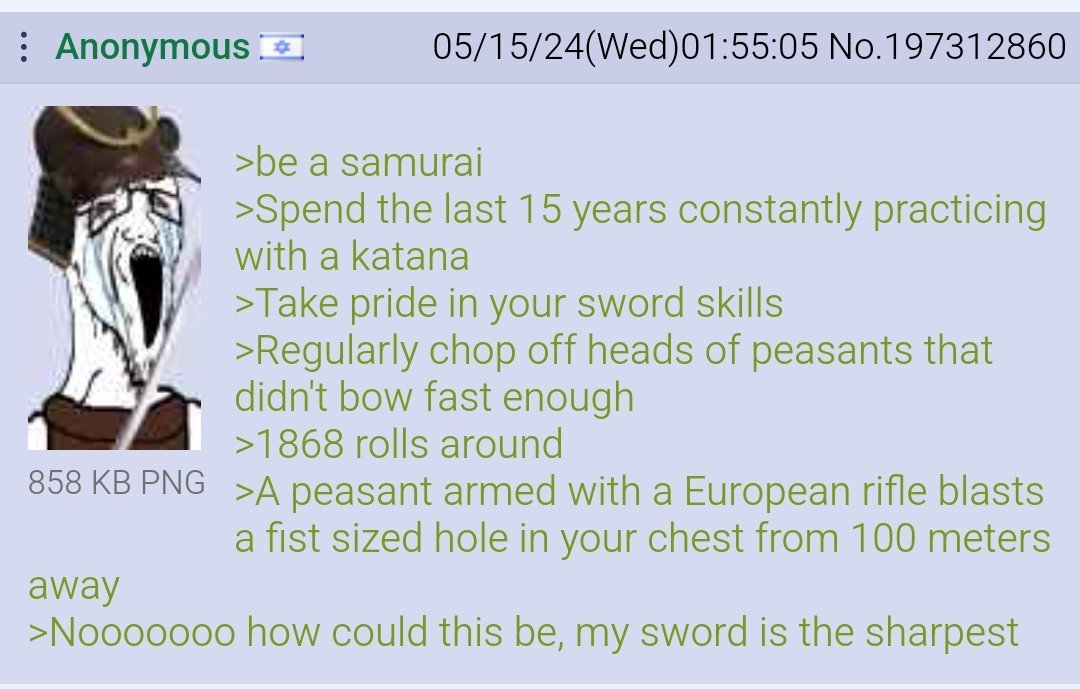this post was submitted on 29 May 2024
501 points (96.3% liked)
Greentext
3948 readers
868 users here now
This is a place to share greentexts and witness the confounding life of Anon. If you're new to the Greentext community, think of it as a sort of zoo with Anon as the main attraction.
Be warned:
- Anon is often crazy.
- Anon is often depressed.
- Anon frequently shares thoughts that are immature, offensive, or incomprehensible.
If you find yourself getting angry (or god forbid, agreeing) with something Anon has said, you might be doing it wrong.
founded 11 months ago
MODERATORS
you are viewing a single comment's thread
view the rest of the comments
view the rest of the comments

I think (having no actual direct knowledge of kendo or any sword martial art, so take with a grain of salt) that the reputation of the katana came more from the skill of the samurai using them than from the blade itself.
It's a light, curved blade, so using it effectively would involve slicing with it, rather than chopping, which is more suitable for heavy blades combined with heavy force. A slice would involve both sliding the edge along the target cut and moving it forward at the same time. It would make sense to me that a slicing motion would generally lead to cleaner and more complete cuts than chopping. It would also hold its sharpness better, since the edge is being interacted with a parallel motion rather than a perpendicular one. The same is true for the full blade.
It's difficult to do that kind of slicing motion combined with a full swing, but perhaps the mediocre iron they had access to is the reason why they went to the effort of developing that technique. Those who were better at cutting things wouldn't break their swords as often, so they put effort into honing that technique and eventually got to the point where katanas would survive long enough to be antiques or family heirlooms.
But that's just my guess, based on observing samurai characters in various media being impressed with the quality of cuts they observe. Like, "based on this cut, I know that it was done by a skilled swordsman". That says there's some kind of technique involved, rather than just swinging the sharp side at it.